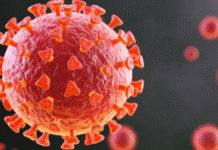NEW DELHI– Tobacco use, long known for its links to cancer and tuberculosis, is also a critical factor behind child stunting, according to a new report from the World Health Organization (WHO). The condition, which impairs growth and development, affects nearly 150 million children globally.
Of the 148 million stunted children recorded in 2022, 52 percent lived in Asia and 43 percent in Africa. Stunting is associated with higher rates of childhood illness and mortality, making it one of the most pressing global health concerns.
The WHO’s newly released document — the 11th in its series of tobacco knowledge summaries — underscores the dangers of tobacco use on child development and calls on governments to tighten tobacco control policies to protect children, particularly during pregnancy.
“Stunting robs children of their right to grow, learn, and thrive,” said Dr. Etienne Krug, Director of the Department of Health Determinants, Promotion and Prevention at WHO. “Children with parents who smoke face a higher risk of stunting.”
Stunting occurs when children’s height-for-age falls more than two standard deviations below WHO Child Growth Standards, often due to poor nutrition, repeated infections, or lack of stimulation. The report highlights that parental smoking compounds these risks, with maternal smoking during pregnancy strongly linked to preterm births, low birth weights, and restricted fetal growth — all predictors of stunting by age two.
“Tobacco smoke contains thousands of toxic chemicals that harm fetal and child development,” the report noted. “Exposure during pregnancy contributes to growth restriction, congenital anomalies, and later chronic diseases. Second-hand smoke after birth worsens respiratory infections and developmental problems, further raising the risk of stunting.”
WHO also stressed that quitting smoking during pregnancy can significantly improve child growth outcomes.
The report urges countries to fully implement the WHO Framework Convention on Tobacco Control (FCTC) and its MPOWER measures — strategies that include banning smoking in public spaces, protecting children and pregnant women from second-hand smoke, and expanding cessation services. (Source: IANS)













